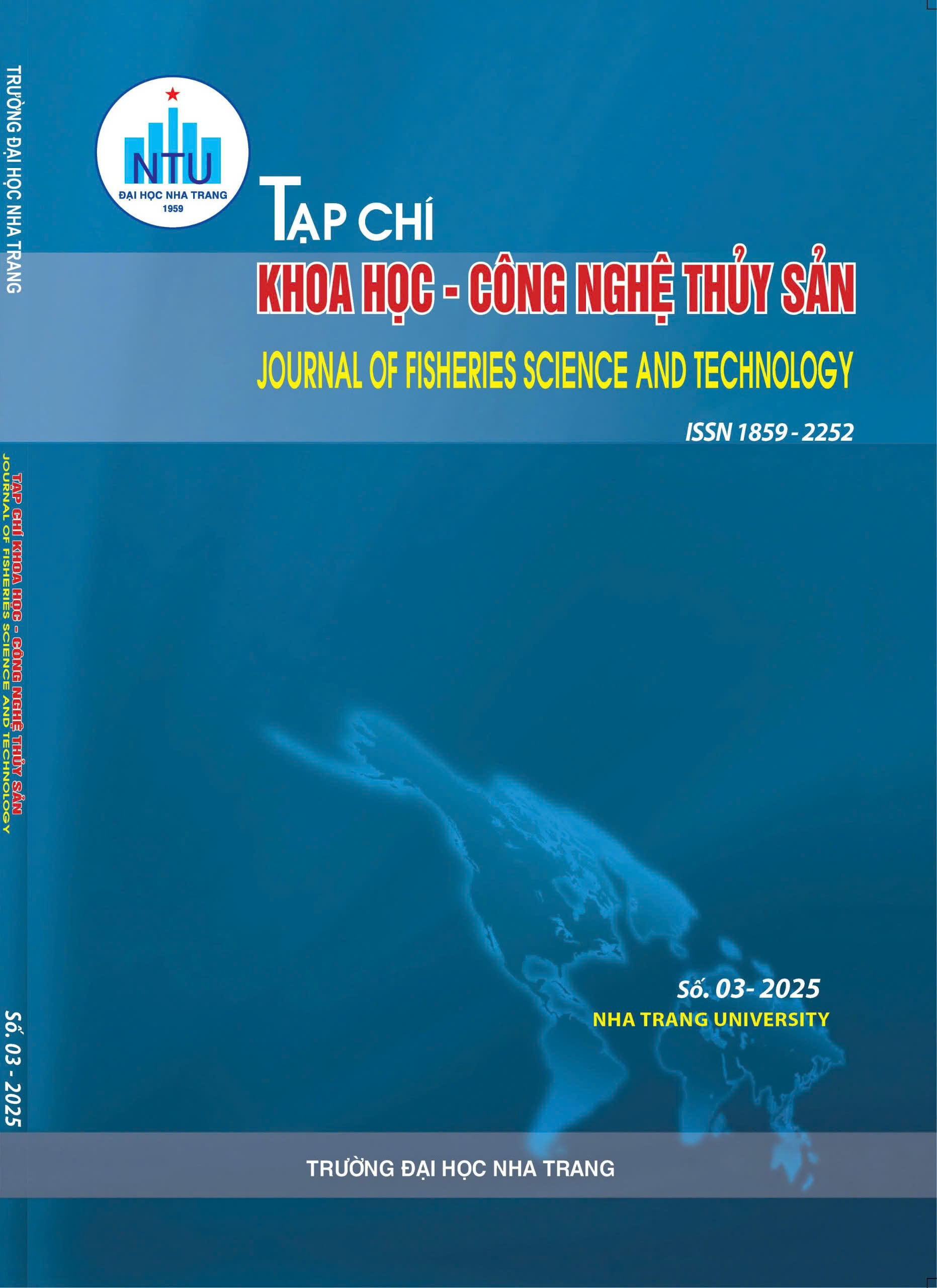##plugins.themes.huaf_theme.article.main##
Tóm tắt
Nghiên cứu này phân tích ảnh hưởng của các yếu tố thời gian (năm, tháng) và môi trường (pha Mặt Trăng, nhiệt độ bề mặt nước biển) đến năng suất khai thác mực ống (Loligo sp.) của nghề lưới chụp tại vịnh Bắc Bộ. Dữ liệu được thu thập từ tàu NA91678TS trong giai đoạn 2018–2023, bao gồm thời gian khai thác, sản lượng khai thác, thành phần loài và thông số môi trường tại ngư trường (nhiệt độ bề mặt nước biển). Mô hình hồi quy cộng tính tổng quát (GAM) được áp dụng để phân tích các mối quan hệ phi tuyến giữa năng suất khai thác (CPUE) và các biến dự báo. Kết quả cho thấy “Pha Mặt Trăng” là yếu tố có ảnh hưởng mạnh nhất đến CPUE, tiếp theo là biến “Năm” và “Tháng trong năm”. Nhiệt độ bề mặt nước biển không thể hiện ý nghĩa thống kê rõ rệt trong mô hình, mặc dù có xu hướng phi tuyến tiềm tàng. CPUE đạt đỉnh vào tháng 9, tháng 10 và vào những ngày gần trăng non, phản ánh đặc tính mùa vụ và hành vi hướng quang của mực ống. Nghiên cứu đã cung cấp luận cứ khoa học quan trọng cho việc tối ưu hóa hiệu quả khai thác của nghề lưới chụp, hỗ trợ công tác sản xuất và quản lý nghề cá theo hướng bền vững.
Từ khóa: Mực ống (Loligo sp.), năng suất khai thác, nghề lưới chụp khai thác hải sản, nhiệt độ bề mặt nước biển, pha Mặt Trăng.
ABSTRACT
This study investigates the effect of temporal (year, month) and environmental conditions (lunar phase, sea surface temperature) on the catch per unit effort (CPUE) of squid (Loligo sp.) catched by stick-held falling net fisheries in the Gulf of Tonkin. Data were collected from vessel NA91678TS during the period 2018–2023, including fishing time, catch, species and environmental parameters (sea surface temperature) at the fishing areas. A Generalized Additive Model (GAM) was employed to characterize the nonlinear relationships between CPUE and the predictor variables. The results revealed that Moon phase exerted the strongest effect on CPUE, followed by year and month, indicating significant temporal and seasonal patterns in squid catchability. Sea surface temperature did not show statistically significant influence, although a potential nonlinear trend was observed. The s stick-held falling net caught the highest yield in September, October and during periods near the new Moon, reflecting the seasonal nature of the fishery and the strong positive phototactic behavior of squid. The study contributes to the understanding of critical factors affecting the catch rates of valuable species, which helps to determine the optimal fishing process of the stick-held falling net fisheries and facilitate sustainable development in fisheries production and management.
Keywords: CPUE, Moon phase, sea surface temperature, squid (Loligo sp.), the stick-held falling net fishery.

